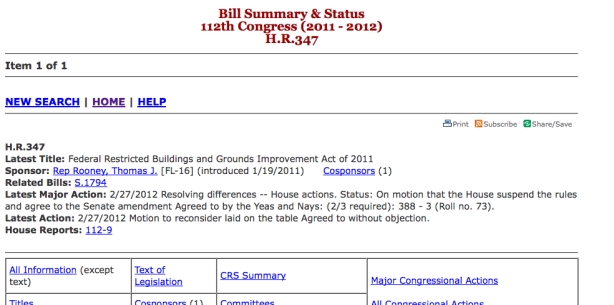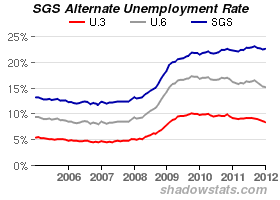“By a continuing process of inflation, government can confiscate, secretly and unobserved, an important part of the wealth of their citizens.”
With those words, John Maynard Keynes–the inventor of the “prime the pump,” economic stimulus theory employed by both FDR and Obama–tells you everything you need to know about current U.S. monetary and fiscal policy. And while he said this as an attack on inflation, it is ironic that his policies have–in some people’s minds–led to high levels of inflation right here in the United States.
American Endgame has already touched upon inflation in fleeting terms. We have discussed the idea that inflation is the rate at which a particular currency loses its value. For example, a 2% rate of inflation will leave a dollar with 25% of its buying power after about 75 years. A 6% rate of inflation will accomplish the same in just over 20. But one thing we have not discussed is how inflation may be purposely being employed by the U.S. Government–and governments around the world–to both buy this economy more time and to establish a solution to America’s “there’s no way we can pay off our debt” problem.
The mechanics of inflation are fairly straightforward. Assuming a fixed supply of currency, businesses will accept the fact that there is a finite amount of money to be “earned,” and prices will stabilize around a strategy to maximize a business’ ability to get the largest chunk of that pot as possible. By way of example, if there were $1,000,000 in the U.S. economy, an intelligent businessman would recognize that there are $1,000,000 in circulation and “up for grabs” among the workers. Some of these dollars would be given to the workers through paychecks, while others would be made available through bank loans, credit card borrowing, etc. This intelligent businessman would also recognize that, on average, each American has access to $1,000,000/x, with x being the number of workers in the country (this is dramatically simplified, but bear with me). After factoring how much of that money must go to basics needed to survive, a businessman makes a calculation of how much they will charge for their good or service to entice workers to spend a portion of their $1,000,000/x dollars on their product to maximize their profit. Conversely, as a worker with only $1,000,000/x dollars available to spend, one must carefully determine how much they must spend to survive, buying food and clothing, paying rent and utilities, before going out to buy other goods. Every purchase results from a calculation that goes approximately like this: “I have $1,000,000/x, so I can still afford to buy…”
Now, what would happen if the U.S. Government made arrangements to introduce an extra $1,000,000 into the economy? This could be done through various methods, including physically creating more currency or by lowering the amount of money banks must hold in reserve, thus allowing them to fractionally lend greater amounts of their deposits. Either way, let us say that now the U.S. economy consists of $2,000,000, and the amount of money available to workers is $2,000,000/x, on average. Of course, this increase will come almost entirely from bank lending and credit card borrowing, since no one is going to advocate doubling a worker’s pay in America–not even in our hypothetical scenarios is that anywhere near realistic. So, now the intelligent businessman recognizes that there are two times as many dollars out there to get his hands on. In this way, prices would rise in all sectors because people are now “twice as able” to buy the products they’ve been buying all along. And while the original intent of the government introducing more currency would have been to get people to buy “extra” stuff with their “extra” money, the effect is almost always different: people will end up buying the same stuff at an “extra” cost. The effect is highly detrimental, and not stimulative at all.
One doesn’t have to be a prize-winning economist to see that this set of circumstances is not only happening today, but very dangerous indeed. After all, if I make a fixed amount of money, and prices continually rise because more money is available to use, this is highly problematic. My purchasing power drops continually as my slice of the overall pie continues to dwindle as I sit helpless. If, in order to keep up, I do what so many Americans do and borrow money from banks or use credit cards to fill the gap, I am doubly in trouble. How will I ever pay it back on a fixed, finite amount of pay? (I say “fixed” and “finite,” and I use those terms in a relative sense. A 3% payraise–unimaginable for most of us–is not “fixed,” but might as well be for the purposes of taking on inflation, since the numbers we see suggest inflation is somewhere near 9 or 10%.) So why does the U.S. Congress and the Federal Reserve continue to make more money available? Consider the alternative. Should the Federal Reserve end its policy of introducing more currency into the system on a fairly constant basis–this introduction is easy because U.S. Dollars, as we’ve learned, are fiat and have no real value–people will be forced, finally for the first time in probably 30 years, to live within their means. “Living within their means” scares the Hell out of Congress. Without more money always being introduced into the system, the United States would experience a highly deflationary event. Americans would quickly begin to conserve and spend far more preciously the currency they possess in order to survive. Without additional availability of credit, we would see money spent on food, utilities, gasoline to get to and from work, clothing, and other basics. Goodbye, Channels 2-300… Goodbye, trips to the movies for a family of four… Goodbye new cars that can’t be paid for from savings… You get the picture. While the uber-rich would probably be fine, the 99% would vastly reduce their spending, and this would cause a massive collapse of the United States’ economy for want of customers. Layoffs would ensue, and a deflationary spiral–where prices would fall to keep up with spending habits, which would lead to layoffs, which would lead to businesses shuttering, which would lead to catastrophe–would be almost certain.
There are some who dare suggest that this type of event is inevitable and necessary to fix the problem we’ve created by allowing too much debt to accumulate in the system. After all, $55 trillion is a lot of debt, and like any massive debt, it will save a lot of money in the long-term were it paid down or paid off. The devil is in the interim. The contraction of such an overinflated economy would most likely feel like something between the Great Depression and the Dark Ages. And as we’ve seen this year in Greece, when the government reduces its spending–ending favored social programs, reducing benefits, lowering minimum wages, and potentially increasing taxes–ain’t nobody gonna be happy. The problem then becomes not only an economic problem, but a major social problem and a political problem. And Congress and the White House don’t have the stomach for an American Spring, which is what they would be looking at if they make the necessary changes.
I am of the mind that we are definitely going to experience this “something between the Great Depression and the Dark Ages” event–you could probably tell by the title of this blog. The question is not whether a major credit crisis will occur. The questions are “when will it occur,” “how do we mitigate the impact on our society,” and “what do we owe to our progeny?” If our generation could shoot for the Great Depression–an event which we survived–and take that on, it would be a great contribution to our nation’s future. This would be far better than the Dark Ages scenario. However, we grew up in a society so focused on material gain, selfish behavior, and instant gratification, that we may not have the mental fortitude to take this on. The alternatives are dire.
One way or another, this event is unavoidable unless we make changes to our spending now. The selfish path leads to our annihilation. The selfless path–where Medicare, Social Security, low taxes, and military omnipresence are sacrificed–may get us out of this mess in the next 50 or 60 years. I am simply not yet convinced we as a people have the foresight and strength to recognize the need for these changes and make them. Even if our Congress sees the need and tries to save us from ourselves, we will probably “unelect” them or riot in the streets. Either way, the outcomes will most likely be the same and we’ll have an interesting lifetime to look forward to.
~ DS





